- New Sailboats
- Sailboats 21-30ft
- Sailboats 31-35ft
- Sailboats 36-40ft
- Sailboats Over 40ft
- Sailboats Under 21feet
- used_sailboats
- Apps and Computer Programs
- Communications
- Fishfinders
- Handheld Electronics
- Plotters MFDS Rradar
- Wind, Speed & Depth Instruments
- Anchoring Mooring
- Running Rigging
- Sails Canvas
- Standing Rigging
- Diesel Engines
- Off Grid Energy
- Cleaning Waxing
- DIY Projects
- Repair, Tools & Materials
- Spare Parts
- Tools & Gadgets
- Cabin Comfort
- Ventilation
- Footwear Apparel
- Foul Weather Gear
- Mailport & PS Advisor
- Inside Practical Sailor Blog
- Activate My Web Access
- Reset Password
- Customer Service

- Free Newsletter


Valiant 40: Reshaping the Cruising Hull

Bristol Channel Cutter 28: Circumnavigator’s Choice
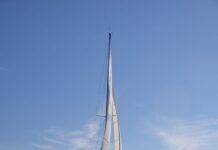
Hunter 35.5 Legend Used Boat Review

Pearson Rhodes 41/Rhodes Bounty II Used Sailboat Review

Best Crimpers and Strippers for Fixing Marine Electrical Connectors

Thinking Through a Solar Power Installation

How Does the Gulf Stream Influence our Weather?

Can You Run a Marine Air-Conditioner on Battery Power?

Practical Sailor Classic: The Load on Your Rode

Anchor Rodes for Smaller Sailboats

Ground Tackle Inspection Tips

Shoe Goo II Excels for Quick Sail Repairs

Solutions for a Stinky Holding Tank

Diesel Performance Additives

What Oil Analysis Reveals About Your Engine

Hidden Maintenance Problems: Part 3 – Gremlins in the Electrics

Seepage or Flooding? How To Keep Water Out of the Boat

Painting a New Bootstripe Like a Pro

Alcohol Stoves— Swan Song or Rebirth?

Living Aboard with an Alcohol Stove

Choosing the Right Fuel for Your Alcohol Stove

Preparing Yourself for Solo Sailing

How to Select Crew for a Passage or Delivery

Preparing A Boat to Sail Solo

Re-sealing the Seams on Waterproof Fabrics

Waxing and Polishing Your Boat

Reducing Engine Room Noise

Tricks and Tips to Forming Do-it-yourself Rigging Terminals

Marine Toilet Maintenance Tips

Learning to Live with Plastic Boat Bits
- Sailboat Reviews
Etchells-inspired e33 – A Practical Sailor New Sailboat Review
The first-ever robbie doyle-jeremy wurmfeld collaboration balances performance sailing with basic comforts in this modern daysail boat..

Photos courtesy of e Sailing Yachts
The trophy daysailer market is rife with branding, image, and various forms of snob appeal. The e33, however, makes its pitch on practical grounds. Reports from the field highlight the performance/comfort/control combination that makes the e33 a fun raceboat. You don’t need a big crew, you can exercise your tactical talents to the max, and you give away nothing in boatspeed. Our time sailing the e33 convinced us that it is not only a legitimate performance sailboat, but that attaining that performance is sinfully easy. The e33 daysailers bonus points include a cockpit that takes up more than half the deck space and can hold five or six adults comfortably; cockpit-led control lines; carbon-fiber spars; and a hydraulic headstay control. Below, Spartan accommodations include berths for four, an enclosed head, and a built-in cooler. With the look of a classic and the innovative design of a modern daysailer, the e33 is e Sailing Yachts intelligent, inspired, comprehensive attempt to capture the fun of performance sailing.
****
With 50 lofts in 30 countries, you might think that Robbie Doyle, founder and president of Doyle Sailmakers, would have more than enough to keep him busy. Nonetheless, hes leapt into boatbuilding. Partnered with designer Jeremy Wurmfeld, Doyle created the e33. One of the many attractive, expensive daysailers to hit the market recently, this 33-footer has minimal accommodations, a 16-foot cockpit, and a host of solutions and innovations.
Doyle remembers how the e33 came about: “Dirk Kneulman (Etchells builder and former world champion), Jeremy, and I were fantasizing about a boat that would be as much fun to sail as the Etchells without the bumps and bruises, a performance boat that could be sailed to the max with no hiking, a boat that gives you no excuse not to sail.” A college All-American (Harvard 1971), Doyle apprenticed with Ted Hood early in his career, spent significant time pursuing The America s Cup, then founded Doyle Sailmakers in 1982. “Much of my course work was in naval architecture at MIT,” he explained. That background, he asserts, not only taught him the basics of boat design, but influenced his approach to sails. Utilizing the principles of elliptical loading demonstrated in the famous Australian wing keel in 1983, Doyle became the first to apply the principle of Elliptical Aerodynamic Loading to sail shapes. The e33 thus grew out of Doyles racing experience, his feel for what sailors want, his understanding of technology, and his capacity for innovation (Stack Pack, Quicksilver reefing, etc.).
Wurmfeld was trained in conventional architecture. After a short time on the job, however, he bolted his desk to become a charter skipper in the Caribbean. After that, he came ashore to enroll in naval architecture at Westlawn Institute of Marine Technology. That degree led to a six-year stint at Sparkman & Stephens before he went out on his own in 2004. Wurmfeld also has raced Etchells on Long Island Sound for years.
Kneulman (Ontario Yachts), who builds Sonars as well as Etchells, decided not to build e33s, despite his involvement in the boats development. That led Doyle and company to Waterlines Systems of Portsmouth, R.I. Small but diversified, Waterlines has specialized in “one-design optimization” and also builds J-22s, J-24s, Farr 40s, and Mumm 30s under license. To date, the company has built more than 20 of the new boats.
The Etchells, a 30-foot, three-man keel racer introduced as a candidate for the Olympics in the mid 1960s, made a stellar starting point for the new design. Originally known as the e22 (for its waterline), the Etchells failed to be chosen for the Games despite dominating the selection trials. There are now more than 50 fleets around the world with more than 1,300 boats actively racing. Rock stars such as Dennis Conner, Jud Smith, and Dave Curtis as well as Kneulman and Doyle attest to the quality of Etchells competition. Called “eternally contemporary” and praised for tacking in 70-degrees and slipping effortlessly through the water, the boat has spawned more than its share of fanatics.

With a ballast/displacement ratio of 63 percent, Etchells are very stiff, Wurmfeld says. The e33s ballast/displacement number is 43 percent, so it, too, stands up well in a breeze. The boats narrow beam (8 feet, 6 inches) minimizes the effect of weight on the rail; the “no hiking” part of its personality is for real.
“We gave the e33 a proper bulb at the end of a 5-foot, 9-inch keel where its weight pays off,” Wurmfeld says.
Like many of the others vying for the “perfect daysailer” mantle, Doyles boat is better for being bigger. Top speed (projected at better than 10 knots) is unlocked by a generous, 27-foot waterline length. Large overhangs forward and aft help assure that its dry underway.
The biggest benefit of its bigness, though, is its huge cockpit. Deep enough to be supremely secure, it seems to go on forever. From transom to companionway, it offers uncompromised lounging, sailing, and elbow room.
The slender hull has V-sections forward of the keel for weatherliness and wave handling. Relatively slack bilges and an easy run of U-shaped sections aft strike a balance between minimizing parasitic drag and providing lift at high speed. Wurmfeld says the foils also reflect the tension between racing efficiency (deep/high-lift) and daysailing practicality (moderate draft/tracking).
One-design competition is always a possibility, but Performance Handicap Racing Fleet (PHRF) is the boats most-likely arena. It rates 90 with a cruising chute in New England and 103 without.
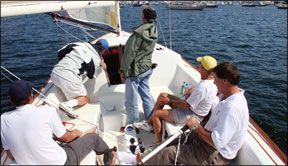
Reports from the field highlight the performance/comfort/control combination that makes the e33 fun to race. You don’t need a big crew, you can exercise your tactical talents to the max, and you give away nothing in boatspeed.
“Starting a new company, we had to beware being all things to all people,” Wurmfeld says. “But the look of the boat was critical. The relationships of masses, shapes, and angles needs to be pleasing to the eye. The counter and transom were my treatment, and Robbie had the last word on the bow angle.”
Like an Etchells, the e33 can be dry-sailed and trailered. At 5,800 pounds, its targeted for the 3-ton lifts at many yacht clubs. “You need a 300-horsepower tow vehicle,” Doyle says. “Strong points for a lifting bridle are built into the boat.”
We asked Doyle if there was a connection between the elliptical aerodynamic loading that he pioneered in the 1980s and the high-roach sailplan of the e33. “When I was building sails for Courageous back in 1977, we tried a high-roach main as an experiment. It became the only main we used that whole summer to win the Cup.”
The textbooks point out that induced drag is minimized by an elliptical (high roach) planform. That makes the ellipse or “Spitfire wing” shape the most efficient outline for a lifting surface, be it wing, keel, or sail. Certainly, sailboards and multihulls have gone heavily in the “fat-head” direction. With the advent of carbon-fiber spars (which Doyle labels “hard not to tune”), masts can now be made stiff enough to stand without a backstay. That, plus refinements in full-length batten technology let monohulls like the e33 benefit from elliptical mainsails and the efficiencies they bring.
“We resisted putting battens in our jib, but a (roller-reefable) triangle didnt give enough punch in light air,” Doyle says. Vertical battens (which make for a better-setting, more-versatile sail) let us add roach for more power.”
The e33s recessed furler with control line led to the helm affords a jib that is elegant and ergonomic as well as efficient.
“Because our sail area is more efficient, we need less of it,” says Doyle. “You can handle our jib without a winch. And our center of pressure is lower. That promotes stability. The J-100, for instance, has a mast thats 7 feet taller than ours.”
Crack off the main, and a lot of the boats sail area goes away. The sheet and traveler let you open (or close) the leech optimally via the top batten. Sails are cut full with easy-to-manage systems like the cunningham to flatten them in a breeze. If you are racing, the Sailtec hydraulic headstay assembly forms a single-point rig adjustment that you can massage puff-by-puff. If you are daysailing, you can set it and forget it.

]Not only does the deck take up half the boat, it is unbroken. More comfortable and less silly than the ubiquitous pushpit seats that adorn many of todays auxiliaries, the afterdeck affords room to read, snooze, or veg in security and comfort. If sunbathing were politically correct, you could do it there, too, all without interfering with the steering or working of the boat.
Just forward of the rudder post is a full-width traveler bar. Sited aft where toe-stubbing is no concern, its control lines are nonetheless convenient to the helm. A gracefully laminated gooseneck tiller sweeps from under the traveler forward to the helmsman.
In the center of the cockpit is a raised pod/footrest that houses mainsheet blocks and can accept a table. If you choose to have the available centerline winch, it goes there beneath the head of the tiller. The sturdy molding houses control lines (halyard, jib furler, spinnaker tackline, and self-tacking jibsheet, if you choose that option) and is low enough to be unobtrusive yet substantial enough for foot bracing. Another nice solution.
It doesn’t surprise us that a boat built by a sailmaker should emphasize sailhandling. The gross and fine-tune systems for the main are not afterthoughts. The big blocks have a home in the pod, and the little ones have been incorporated into the main (carbon-fiber) boom. Two-part control for the jib might have been cumbersome, but fairing the blocks for the fine-tuner into a cabintop channel makes the assembly look clean and work well.
Accommodations
Below, youll find “the bare necessities.” Bunks for a cozy family of four, an enclosed head, and cooler complete the list. No galley, no running water, no weight, no worries.
Doyle and his wife, Janet, took the boat on the Eastern Yacht Club cruise. In four nights and five days aboard, she enjoyed “a dry and comfortable cabin with spacious bunks … zero time over a hot stove … and having 18 aboard for cocktails in the cockpit.” Simplified, camping-out cruising has its charms. The e33 can easily provide them.
Performance
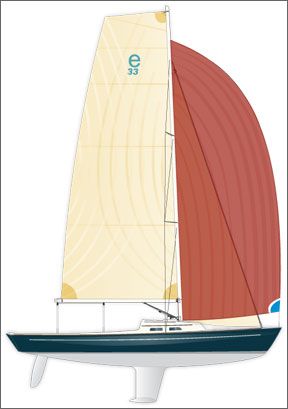
The boat has an auxiliary (a 14-horsepower Yanmar diesel with folding prop on a sail drive), but we doubt it will see much use. Open, narrow, light, and maneuverable, the e33 simplifies boathandling (under both sail and power) around docks, moorings, and marinas-an aspect of “performance” that is easily overlooked.
A 2:1 halyard and ball-bearing Ronstan cars for the battens took the strain out of raising the main. With the sail fully hoisted, the cunningham became our prime means of draft control.
The jibs conventional double-sheeting works so well that we wonder why anyone would choose the optional self-tacker. The standard 105-percent jib looks to us more hassle-free and foolproof than the self-tending alternative.
Falling off and running before a moderate souwester out of Marblehead, Mass., we noted how the jib settled into wing-and-wing untended and how comforting it was to have a clear field of vision over the bow. We sat at the rail, the seat, switched sides … there didnt seem to be a bad spot to steer from. There was nothing “corky” about the way it cut the water. There was little wobble as we surged along. Deep, narrow boats have a feel of their own.
Outside the harbor, we lost some of the breeze and picked up a bit of chop as we rounded onto the wind. This is where we expected her to be at her worst: light wind and waves. Did she have the raw sail power to punch through the slop?
With no trial horse in sight and drawing only on seat-of-the-pants approximation, we loosened the headstay and bagged the main a bit. Our acceleration improved as did our speedo numbers. While the e33 lacks the same “power reserve” you might expect from a boat with a taller rig and an overlapping headsail, its ultra-efficient rig and easily driven hull make it more competitive than you might think. An optional Code-O turbocharges the boat in light air.
On the way back to the mooring, the local “harbor hurricane” in the entrance channel bumped the breeze up into the teens. As advertised, an ease of the main and pump on the headstay had us driving through the puffs at better than 8 knots, no hiking necessary. Flat water showed her close-windedness off to advantage; tacking in less than 80 degrees was impressive.
Wending through the crowded mooring field, the e33 was balanced enough to let us bear away without spilling the main, responsive enough to carve tight turns. Several times, we approached from dead downwind and luffed around a moored boat or ball. The narrow hull carries the e33s weight for boatlengths at a time, the jib feathers harmlessly amidships. More than once, we drove to leeward around an obstacle despite a building puff … minimal helm, positive result!
Some critics called her “too much boat” for the average sailor. Others said that only top-notch pros like Doyle could get the most out of her. However, our time on the water convinced us that she is not only a legitimate “performance boat,” but that attaining that performance is sinfully easy.
Conclusions
On the printed page, the profile/sailplan of the e33 emphasizes the contrast between its modern-looking rig and its heritage hull. On the water, that mismatch is minimized to the point that we didnt find it to be a problem.
Though it doesn’t approach the “million dollar” pricetag of some of todays new daysailers, the e33 (with a base price of better than $150,000) is not cheap. But when it comes to quality items like the carbon mast and boom, you get what you pay for.
Indeed, the “trophy daysailer” market is rife with branding, image, and various forms of snob appeal. The e33, on the other hand, makes its pitch on practical grounds. As the marketing literature emphasizes, it is an intelligent, inspired, comprehensive attempt to capture the fun of performance sailing. Thanks to the talents and experience of Doyle and company, it succeeds admirably in doing just that.
- e33 Construction Details


RELATED ARTICLES MORE FROM AUTHOR
Leave a reply cancel reply.
Log in to leave a comment
Latest Videos

Beneteau 46.1: What You Should Know | Boat Tour

How to Clean Your Sails

C&C 40: What You Should Know | Boat Review

A Simple Solution for Boat Toilet Stink
- Privacy Policy
- Do Not Sell My Personal Information
- Online Account Activation
- Privacy Manager
The E33 is a 33.05ft fractional sloop designed by Parsak & Wurmfeld and built in fiberglass by Lyman-Morse since 2006.
The E33 is a light sailboat which is a very high performer. It is very stable / stiff and has a good righting capability if capsized. It is best suited as a racing boat. The fuel capacity is originally very small.
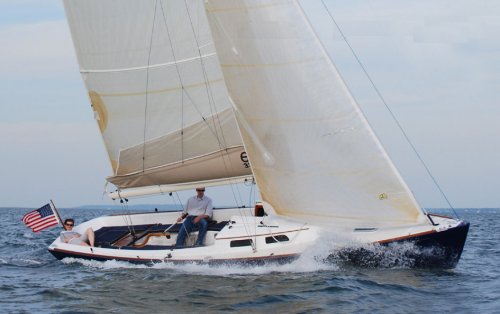
E33 for sale elsewhere on the web:

Main features
Login or register to personnalize this screen.
You will be able to pin external links of your choice.

See how Sailboatlab works in video

We help you build your own hydraulic steering system - Lecomble & Schmitt
Accommodations
Builder data, modal title.
The content of your modal.
Personalize your sailboat data sheet

FLASH e33LM
- SPECIFICATIONS
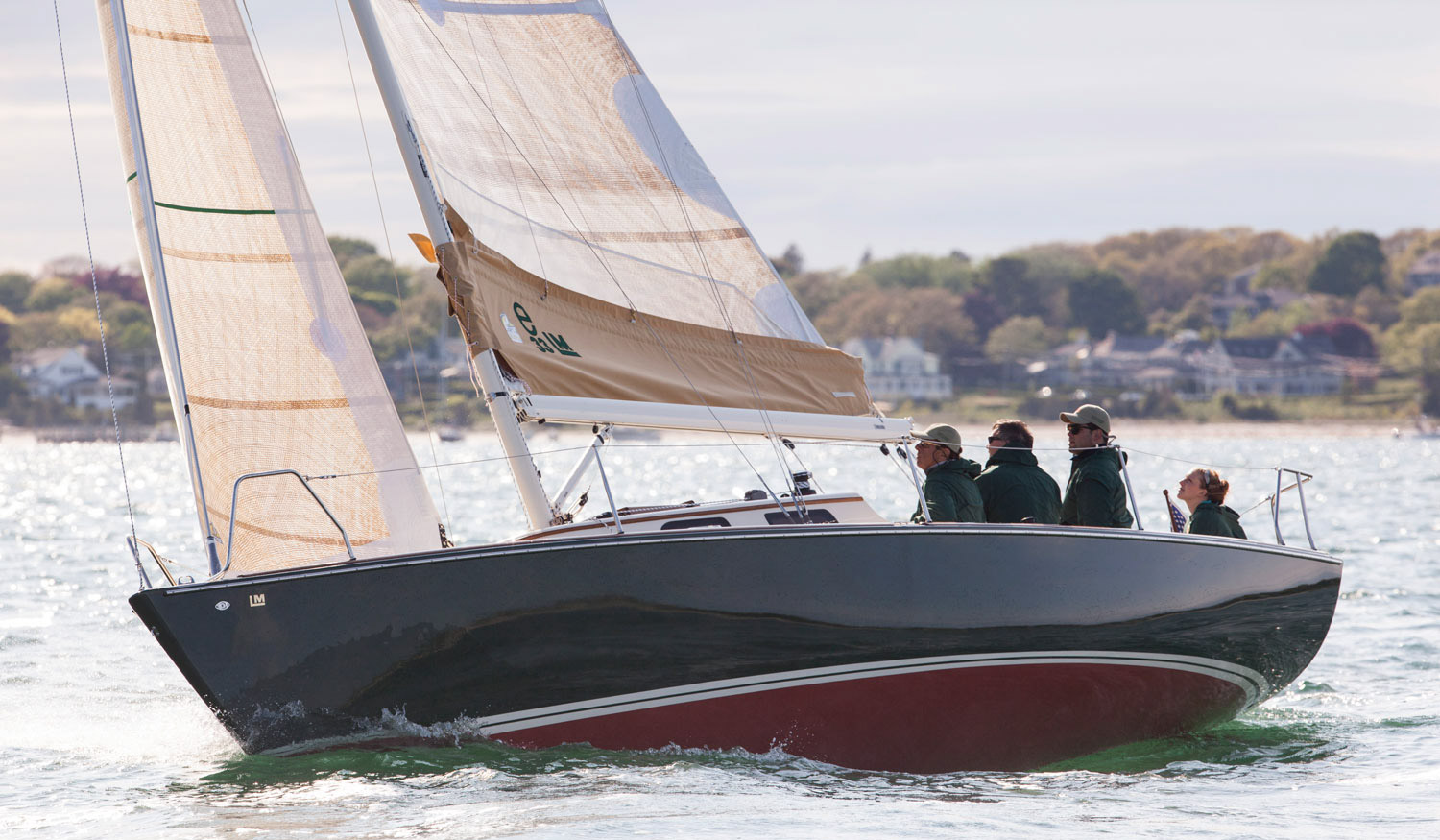
The e33 has had a continuous evolution since inception, always keeping in our minds ease of use, excellent performance and elegant look. Flash, the latest e33LM, is the wood/glass hybrid built for a discerning customer who wanted the performance of the original e33 but with the elegant look and feel of a wooden boat. With top engineering coupled with our top composite team, eSailing Yachts has entered a new generation of truly elegant performance boats that are just as accomplished on the race course as they are on a relaxing day sail.
Specifications
- fuel capacity 13 gal
- water capacity 17 gal
- type Sailing
- designed by Persak & Wurmfeld
- builder Lyman-Morse
- model e33LM
- construction wood/glass hybrid
- hull material western red cedar, 6 oz fiberglass
- boat engine Yanmar 2YM 15
- horsepower 14 hp
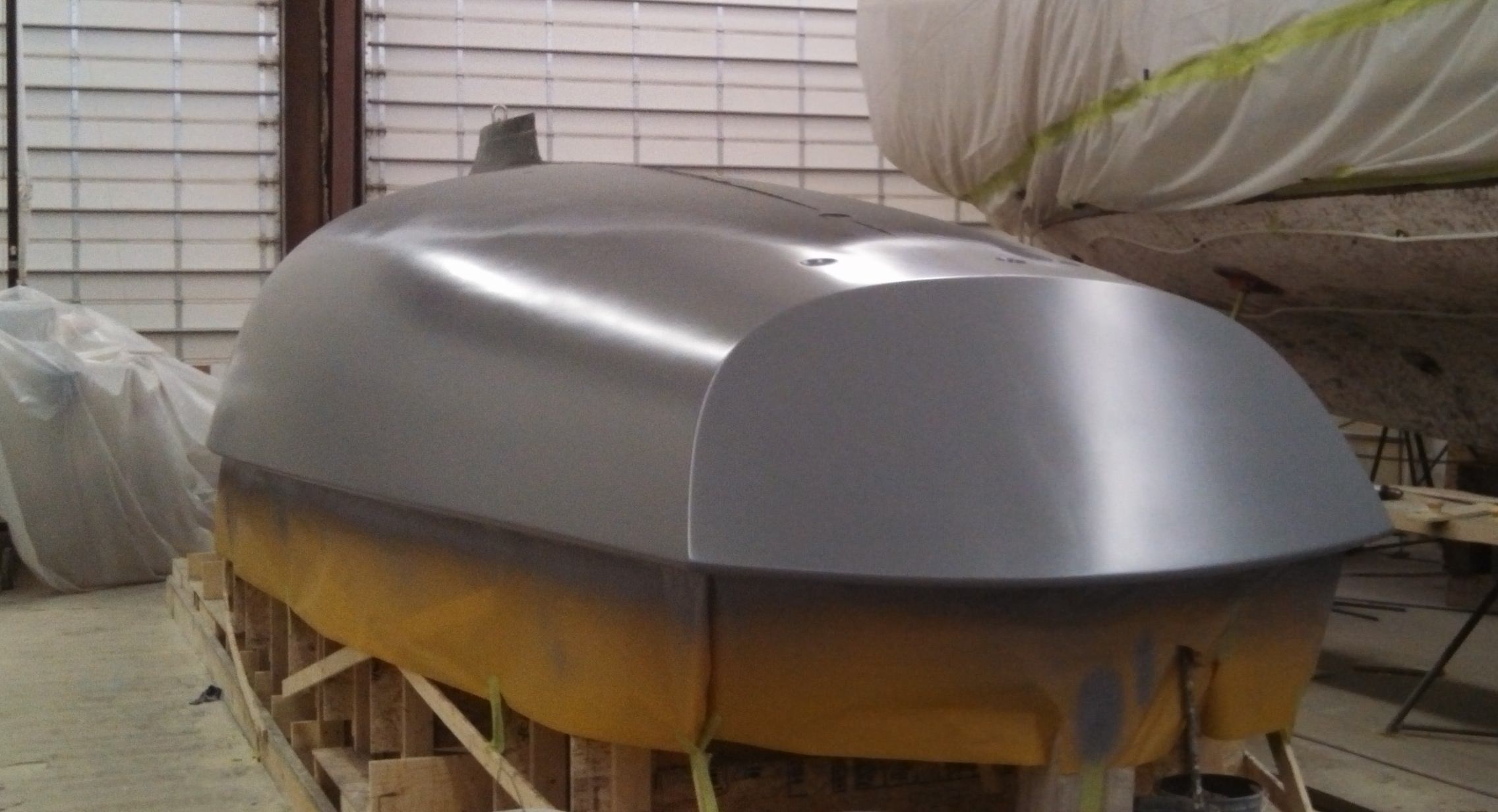
Pulling the Hull
Lyman-Morse Boatbuilding’s newest e33, “FLASH” is removed from the plug. The e33LM is easy to handle, fast and crafted to rival the world’s finest sailing yachts. Building on the original e33 concept, Cabot Lyman and Robbie Doyle have collaborated to offer the new e33LM. This version is available with optional “hybrid” construction — all composite beneath the waterline and western red cedar above — for those who want performance along with the classic beauty of a wooden boat. The simple rig, with self-tacking headsail and no backstay, makes the e33LM a stress-free daysailer, club racer, or casual escape on a lazy summer afternoon.
Layout and Design
- All wood interior finish with complementary wood trim on the deck and around the enormous cockpit
- A self-tacking jib and removable lifelines
- A shoal draft of 4’9”to explore the inlets.
- Performance. The newest e33LM, FLASH, registered a first in class and first overall among the eighty spinnaker class boats at the 2014 Figawi Race from Hyannis to Nantucket. For her shakedown cruise, FLASH competed in a 25.6 mile race that included a 4 mile beat in 25 knots and 6 foot seas against the current, completing the race in 3.5 hours!
- The boat has the look of a yacht. Including polished stainless furler in lieu of the below deck furler. Rod rigging all around.
- Extra-ordinary construction with added detailing and features. Cabot Lyman conceived this hybrid construction.
- The solid glass bottom extends from the keel to the water line and includes the stem and transom. This lower hull portion is no-maintenance alleviating many people’s concerns about bilge rot in wooden boats.
- The topsides are strip planked in western red cedar, with a 6 oz fiberglass boat cloth set in clear coating epoxy for a spectacular bright finish. The exterior glass skin is 5/16” of structural glass laminated with epoxy and finished with the Awlgrip system.
- The interior bulkheads and cabinets are built with specially selected mahogany veneers and custom made mahogany trim and moldings.
- The interior joinery panels, moldings and contoured toe rail are produced by a precision CNC milling machine.
- A bulkhead was added for privacy dividing the head from the cabin
- The companionway hatch has been completely redesigned for smooth function an aesthetics.
- Stanchion bases are integrated into the toe rail for a clean look and clear deck space.
- Custom elements include, a mahogany pedestal for sink and faucet, hot and cold water, chart plotter locker with shelving, fusion stereo system, autopilot, cell phone booster, DC cooler, flush mounted bow lights, wooden tiller extension, wrap around eye brow.
Designer Comments
In 2006 Jeremy Wurmfeld’s innovative design work caught the eye of sailmaker Robbie Doyle and the two went on to co-found e Sailing Yachts and design the award winning e33.
Drawing on their own sailing and racing experiences, Robbie and Jeremy were inspired to bring a new kind of sailing experience to market with boats that do not compromise performance and speed for comfort stability and ease of sail. With the launch of e33 hull #1 in September 2006, their vision became reality .
Start yours today! Call 207-354-6904 or email us [email protected]
- Name * First Last
- Add me to your mailing list
- Phone This field is for validation purposes and should be left unchanged.

Fin Keel w/bulb
Specifications E33
2006 - 33.05 ft / 10.07 m - E Sailing Yachts(USA) - Parsak & Wurmfeld

E33 Sailboat Data
Hull Type: Fin Keel w/bulb Rigging Type: Fractional Sloop LOA: 33.05 ft / 10.07 m LWL: 27.08 ft / 8.25 m S.A. (reported): 530.00 ft² / 49.24 m² Beam: 8.75 ft / 2.67 m Displacement: 5,900.00 lb / 2,676 kg Ballast: 2,500.00 lb / 1,134 kg Max Draft: 5.75 ft / 1.75 m Construction: FG Ballast Type: Lead First Built: 2006 Builder: E Sailing Yachts(USA) Designer: Parsak & Wurmfeld
Information from sailboatdata.com .
Type Engine: Diesel HP: 14 Fuel: 10 gals / 38 L Hull Speed: 6.97 kn
Great choice! Your favorites are temporarily saved for this session. Sign in to save them permanently, access them on any device, and receive relevant alerts.
- Sailboat Guide
Hunter E33 is a 33 ′ 5 ″ / 10.2 m monohull sailboat designed by Hunter Marine and built by Hunter Marine starting in 2011.
- 2 / 16 Rouses Point, NY, US 2012 Hunter E33 $99,000 USD View
- 3 / 16 Rouses Point, NY, US 2012 Hunter E33 $99,000 USD View
- 4 / 16 Rouses Point, NY, US 2012 Hunter E33 $99,000 USD View
- 5 / 16 Rouses Point, NY, US 2012 Hunter E33 $99,000 USD View
- 6 / 16 Rouses Point, NY, US 2012 Hunter E33 $99,000 USD View
- 7 / 16 Rouses Point, NY, US 2012 Hunter E33 $99,000 USD View
- 8 / 16 Rouses Point, NY, US 2012 Hunter E33 $99,000 USD View
- 9 / 16 Rouses Point, NY, US 2012 Hunter E33 $99,000 USD View
- 10 / 16 Rouses Point, NY, US 2012 Hunter E33 $99,000 USD View
- 11 / 16 Rouses Point, NY, US 2012 Hunter E33 $99,000 USD View
- 12 / 16 Rouses Point, NY, US 2012 Hunter E33 $99,000 USD View
- 13 / 16 Rouses Point, NY, US 2012 Hunter E33 $99,000 USD View
- 14 / 16 Rouses Point, NY, US 2012 Hunter E33 $99,000 USD View
- 15 / 16 Rouses Point, NY, US 2012 Hunter E33 $99,000 USD View
- 16 / 16 Rouses Point, NY, US 2012 Hunter E33 $99,000 USD View
Rig and Sails
Auxilary power, accomodations, calculations.
The theoretical maximum speed that a displacement hull can move efficiently through the water is determined by it's waterline length and displacement. It may be unable to reach this speed if the boat is underpowered or heavily loaded, though it may exceed this speed given enough power. Read more.
Classic hull speed formula:
Hull Speed = 1.34 x √LWL
Max Speed/Length ratio = 8.26 ÷ Displacement/Length ratio .311 Hull Speed = Max Speed/Length ratio x √LWL
Sail Area / Displacement Ratio
A measure of the power of the sails relative to the weight of the boat. The higher the number, the higher the performance, but the harder the boat will be to handle. This ratio is a "non-dimensional" value that facilitates comparisons between boats of different types and sizes. Read more.
SA/D = SA ÷ (D ÷ 64) 2/3
- SA : Sail area in square feet, derived by adding the mainsail area to 100% of the foretriangle area (the lateral area above the deck between the mast and the forestay).
- D : Displacement in pounds.
Ballast / Displacement Ratio
A measure of the stability of a boat's hull that suggests how well a monohull will stand up to its sails. The ballast displacement ratio indicates how much of the weight of a boat is placed for maximum stability against capsizing and is an indicator of stiffness and resistance to capsize.
Ballast / Displacement * 100
Displacement / Length Ratio
A measure of the weight of the boat relative to it's length at the waterline. The higher a boat’s D/L ratio, the more easily it will carry a load and the more comfortable its motion will be. The lower a boat's ratio is, the less power it takes to drive the boat to its nominal hull speed or beyond. Read more.
D/L = (D ÷ 2240) ÷ (0.01 x LWL)³
- D: Displacement of the boat in pounds.
- LWL: Waterline length in feet
Comfort Ratio
This ratio assess how quickly and abruptly a boat’s hull reacts to waves in a significant seaway, these being the elements of a boat’s motion most likely to cause seasickness. Read more.
Comfort ratio = D ÷ (.65 x (.7 LWL + .3 LOA) x Beam 1.33 )
- D: Displacement of the boat in pounds
- LOA: Length overall in feet
- Beam: Width of boat at the widest point in feet
Capsize Screening Formula
This formula attempts to indicate whether a given boat might be too wide and light to readily right itself after being overturned in extreme conditions. Read more.
CSV = Beam ÷ ³√(D / 64)
Draft – Shoal: 4.5’/1.37 m Ballast – Shoal: 3,579 lb/1,623 kg Mast Height – Furling: 51.92’/15.80 m Sail Area – Actual (Furling):542 sq ft/50.4 sq m P – Furling: 41’/12.51 m E – Furling: 14.58’/4.45 m Holding Tank Capacity: 15 gal/57 L Inboard Engine – Optional 29 HP
Embed this page on your own website by copying and pasting this code.

- About Sailboat Guide
©2024 Sea Time Tech, LLC
This site is protected by reCAPTCHA and the Google Privacy Policy and Terms of Service apply.

- BOAT OF THE YEAR
- Newsletters
- Sailboat Reviews
- Boating Safety
- Sails and Rigging
- Maintenance
- Sailing Totem
- Sailor & Galley
- Living Aboard
- Destinations
- Gear & Electronics
- Charter Resources

Hunter e33: Best Compact Cruiser
- By Herb McCormick
- Updated: December 28, 2011
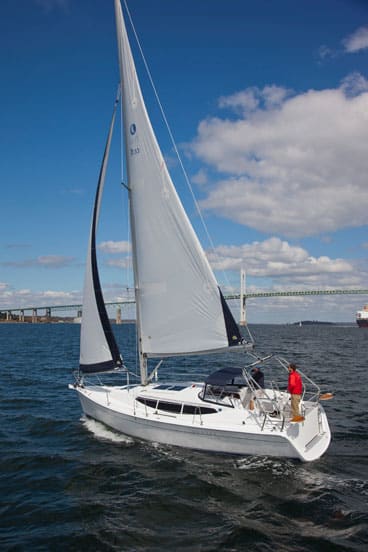
When choosing the winners each year in their respective classes, the Boat of the Year judges first assess which boats best meet the objectives and goals set forth and defined by their designers and manufacturers. Secondly, they look for good value. In this year’s overall fleet of contestants, the lone entry to come in at a price point under $120K was the Hunter e33. But that wasn’t by any means the sole reason our panel named the 33-footer as the Best Compact Cruiser, 30 to 35 Feet. No, the fact that Hunter nailed its mission statement is what truly separated the e33 from the pack.
“With this introductory cruiser, Hunter is trying to bring people up through its ranks and into cruising from trailer-sailers and smaller boats,” said Alvah Simon. “And the company has done that with a 33-footer that has quality and affordability but is still manageable and unintimidating. They know exactly who they’re appealing to, and to introduce them into the keelboat market, they understand that you can’t do that with boats that are hard to handle, with cranky helms and poor layouts.”
Other features caught Ed Sherman’s eye. “Hunter’s come a long way,” he said. “They work very hard to comply with A.B.Y.C. standards. Yes, they’re meeting a price point, and they do that very effectively, but they’re not compromising on very important systems and equipment. On top of that, I really enjoyed sailing the boat, and I love the articulating-transom concept, which I see as a real asset when moored or anchored and you’re moving on and off the boat on a regular basis.”
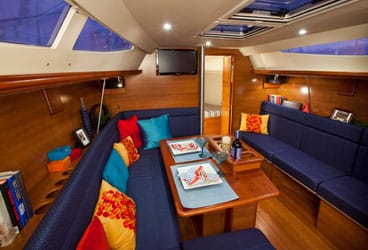
While Sherman focused on individual assets, Beth Leonard viewed the boat through a wider lens. “I’m sort of amazed at what they accomplished in this size range,” she said. “Here’s a 33-foot boat that has two cabins, a workable navigation station, a spacious galley, and a real saloon table. Ten or 20 years ago, you had to give up something in a boat this length. And there were other little details that they really thought through and got right that you probably won’t even notice until you’re using them all the time and realizing how valuable they are. ”
No, the Hunter e33 wasn’t the biggest boat in its division. But good things often come in small packages.
View more photos of the Hunter e33 here .
Winning Details -The e33 squarely meets its mission statement as an “affordable, introductory family coastal cruiser.”
-Judges noted tremendous attention to detail in hardware selection and A.B.Y.C. standards compliance.
-Smart and effective layouts grace the cockpit, the side decks, and the interior space.
- More: Boat of the Year , hunter marine , keelboat , monohull , Sailboats
- More Sailboats

Sailboat Preview: Lagoon 43

Sailboat Preview: Neel 52

For Sale: 2017 Leopard 48

For Sale: 2018 Beneteau Oceanis 41.1

How We Built Our Own Bulwarks

PredictWind Introduces PredictCurrent App
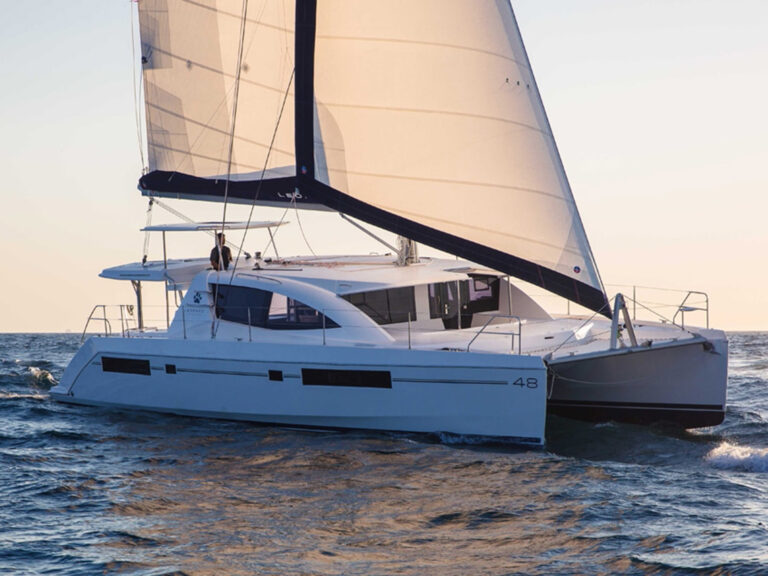
- Digital Edition
- Customer Service
- Privacy Policy
- Email Newsletters
- Cruising World
- Sailing World
- Salt Water Sportsman
- Sport Fishing
- Wakeboarding

IMAGES
VIDEO
COMMENTS
After 7 years of constant improvements, the latest version - the e33LM - is a revolutionary hybrid boat using a wood/glass combination that maintains our vision of the ultimate daysailer. With high level engineering coupled with our top composite team, e Sailing Yachts has entered a new generation of truly elegant performance boats that are ...
The e33 LM is the wood/glass hybrid version, perfect for a discerning customer who wants the performance of the original e33 but with the elegant look and feel of a wooden boat. With top engineering coupled with our world-class composites team, the e33 LM joins a new generation of truly elegant performance boats that are just as accomplished on ...
The E33 was designed to be a fun, simple, and high performance daysailor and club racer that can be easily sailed by one, or comfortably enjoyed by a crew of up to six thanks to her oversized cockpit. ... The E33 is one of the few American-made sailboats, built to the highest standards by the renowned shipwrights at Lyman-Morse in Thomaston ...
Velocity Prediction. e Sailing Yachts has utilized extensive performance analysis to optimize the e33 sailing experience. The boat features a fast and easily driven v-hull, high stability and high lift foils. The boat is designed to be sailed to its full potential with the entire crew seated comfortably inside the spacious 16 foot cockpit.
e33 ; experience Sign up for a Test Sail Today. contact us subscribe : Family Daysailer, classically inspired, light air and downwind power, single-handed ease, thoroughbred performance undersail and under power : about us; owners ; press ; gallery ; e33 ; experience ...
Open, narrow, light, and maneuverable, the e33 simplifies boathandling (under both sail and power) around docks, moorings, and marinas-an aspect of "performance" that is easily overlooked. A 2:1 halyard and ball-bearing Ronstan cars for the battens took the strain out of raising the main.
E33 is a 33′ 0″ / 10.1 m monohull sailboat designed by Parsak & Wurmfeld and built by E Yacht Builders and Lyman-Morse starting in 2006. ... the more easily it will carry a load and the more comfortable its motion will be. The lower a boat's ratio is, the less power it takes to drive the boat to its nominal hull speed or beyond. Read more ...
The E33 is a 33.05ft fractional sloop designed by Parsak & Wurmfeld and built in fiberglass by Lyman-Morse since 2006. The E33 is a light sailboat which is a very high performer. It is very stable / stiff and has a good righting capability if capsized. It is best suited as a racing boat. The fuel capacity is originally very small.
The e33 has had a continuous evolution since inception, always keeping in our minds ease of use, excellent performance and elegant look. Flash, the latest e33LM, is the wood/glass hybrid built for a discerning customer who wanted the performance of the original e33 but with the elegant look and feel of a wooden boat.
A sailmaker, a boatbuilder, and a naval architect are standing at a bar having a quiet drink no, this isn t yet another incarnation of an old joke. It s how sailmaker Robbie Doyle explains the genesis of the e33, a collaboration between him, builder Dirk Kneulman, and designer Jeremy Wurmfeld. Talk turned to the declining state of one-design racing and of what type of boat it would take to
Buy Lyman-Morse sailing yachts e33. Lyman-Morse sailing yachts e33 for sale on DailyBoats.com are listed for a range of prices, valued from $285,000 on the more basic models to $285,000 for the most expensive. The boats can differ in size from 10.21 m to 10.21 m. The oldest one built in 2017 year.
E33 Sailboat Data. Hull Type: Fin Keel w/bulb Rigging Type: Fractional Sloop LOA: 33.05 ft / 10.07 m LWL: 27.08 ft / 8.25 m S.A. (reported): 530.00 ft² / 49.24 m ...
A boat with a BN of 1.6 or greater is a boat that will be reefed often in offshore cruising. Derek Harvey, "Multihulls for Cruising and Racing", International Marine, Camden, Maine, 1991, states that a BN of 1 is generally accepted as the dividing line between so-called slow and fast multihulls.
Though it is a fabulous daysailer and should also be great fun to race, the e33 doesn't make much of a cruising boat. There are two berth-sized settees below, plus a small kid-sized V-berth, and little else other than a drinks cooler that doubles as a companionway step and a toilet stashed under a locker lid. Good enough for an overnight, I'd ...
The Endeavour 33 was introduced in 1983 and ended production in 1986 with just over 220 hulls made. The E33 is considered part of the second generation of Endeavour sailboats. With new racing rules and the desire by cruisers to sail faster, Endeavour began emphasizing larger, stronger, and faster designs. Bruce Kelley was brought in to draw the ...
The new Hunter e33 has a modified hull with a wider beam carried farther aft, and a longer waterline which suggests she's faster than her predecessor, the Hunter 33. The hull is a solid laminate with a balsa sandwich core above the waterline, and the long curved ports bring a contemporary and sleek look to the redesigned deck.
With a ballast/displacement ratio of 63 percent, Etchells are very stiff, Wurmfeld says. The e33's ballast/displacement number is 43 percent, so it, too, stands up well in a breeze. The boat's narrow beam (8 feet, 6 inches) minimizes the effect of weight on the rail; the "no hiking" part of its personality is for real.
A displacement of about 6,000 pounds combined with less than 9 feet of maximum beam on a 27-foot waterline, give this hull some numbers that point to a high thrill potential. The cockpit does have drink holders, but with this boat's sail area to beam ratio, they probably should be gimbaled. www.esailingyachts.com. e33 Daysailer Specs
A boat with a BN of 1.6 or greater is a boat that will be reefed often in offshore cruising. Derek Harvey, "Multihulls for Cruising and Racing", International Marine, Camden, Maine, 1991, states that a BN of 1 is generally accepted as the dividing line between so-called slow and fast multihulls.
Hunter E33 is a 33′ 5″ / 10.2 m monohull sailboat designed by Hunter Marine and built by Hunter Marine starting in 2011. ... the more easily it will carry a load and the more comfortable its motion will be. The lower a boat's ratio is, the less power it takes to drive the boat to its nominal hull speed or beyond. Read more. Formula. D/L ...
E33 preowned sailboats for sale by owner. E33 used sailboats for sale by owner.
1.877.4eyachts (439.2248) contact us subscribe subscribe
Above: the Hunter e33. "This 33-footer is spacious, comfortable, and fun, all at a very enticing price point." -Beth Leonard Billy Black. When choosing the winners each year in their respective classes, the Boat of the Year judges first assess which boats best meet the objectives and goals set forth and defined by their designers and manufacturers.